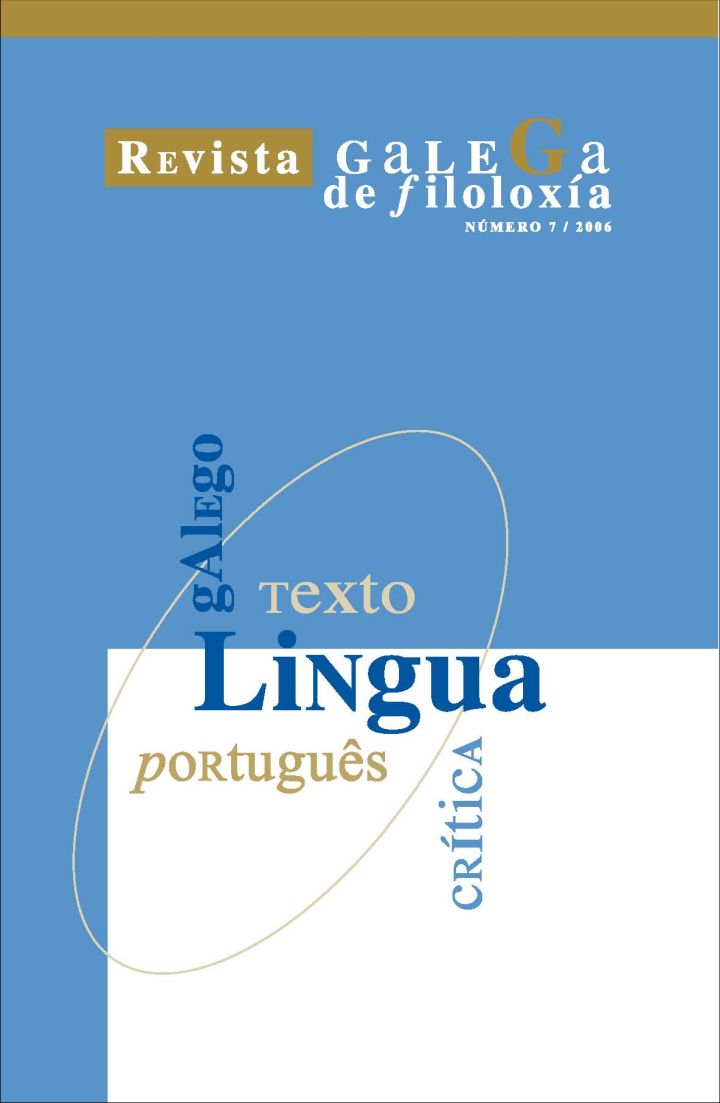Falocentrismo y heteronormatividad en la traducción: de como as mulheres e as lésbicas são varridas da história com um golpe de penæ
Contenido principal del artículo
Resumen
Este artículo interdisciplinar parte de estudios basados en la traducción como herramienta metodológica para indagar en la manera en que las/los traductoras/es entendidas/os como usuarias/os arquetípicas/os del lenguaje pueden proyectar mediante el uso inapropiado del lenguaje normas heterosexistas socialmente dominantes bajo el pretexto de ser de interpretaciones neutrales.
Más específicamente, aborda la cuestión de las normas androcéntricas que rigen el lenguaje y que llevan, por fuerza, a estereotipos sexuales y de género en general y al heterosexismo en particular. Además de analizar instancias en las que la traducción ha sido utilizada de manera consciente para censurar papeles de género que se sitúen fuera de las normas falocéntricas, y más especialmente la sexualidad femenina, dentro del cuadro teórico de género latente (covert) frente al agénero patente (overt) asociado con los conceptos relacionados de denotación y connotación semántica, el artículo ahonda en la manera en que pueden ser útiles ejercicios basados en la traducción construidos alrededor de pares de lenguas que no marcan el género gramaticalmente con otras que sí lo marcan de manera obligatoria para así tornar visibles cualquier prejuicios hasta inclusive inconscientes por parte de las/os propias/os traductora/es. A un nivel ya más amplio, el artículo intenta desvelar las potenciales implicaciones que lleva parejo la tradución como un medio que sirve para censurar no solo sexualidades socialmente marginalizadas sino también para proyectar determinadas visiones ideologizadas de lo que se entiende como normal o no, lo que lleva a la necesidad de que las traductoras y los traductores se vuelvan más conscientes y responsables con respecto a sus propias expectativas social y culturalmente condicionadas.
Palabras clave:
Descargas
Métricas
Detalles del artículo
Citas
Ager, S. (1998-2004): "Nushu", en Ager, S, Omniglot, http://www.omniglot.eom/writing/nushu.htm.
Baxter, R.N. (2005): "On the need for non-sexist language in translation", en Thao Le (2005), Language, Society and Culture, 15 http://www.edue.utas.edu.au/users/tle/JOURNAL/ARTICLES/2005/15-1.htm
Bodine, A. (1975): "Androcentrism in prescriptive grammar: singular 'they', sex-indefinite 'he', and 'he or she"', Language in Society, 4 (2): 129-146.
Boulter, A. (2002): Around the Houses (London: Serpent's Tail).
Braun, F. (2001): "The Communication of Gender in Turkish", en Hellinger, M / Bußmann, H. (eds.) (2001), Gender across languages. Vol. 1: 283-310 (Amsterdam / Filadelfia: John Benjamins).
Casavent, J. (2003): Twist of Fate (Nederland: Yellow Rose Books).
Colin, S. / Koşar, S. (1997): Le turc tout de suite (París: Pocket-Langues pour tous).
Dworkin, A. (1994): "The Unremembered: Searching for Women at the Holocaust Memorial Museum", Ms. Magazine, Vol. V, 4: 5258.
Engelberg, M. (2002): "The Communication of Gender in Finnish", en Hellinger, M. / Bußmann, H. (eds.) (2002), Gender across languages. Vol. 2: 109-132 (Amsterdam / Filadelfia: John Benjamins).
European Commission (1995-2005): "Gender Mainstreaming", en Europa http://europa.eu.int/comm/employment_social/equ_opp/gms_en.html.
Even-Zohar, l. (1990): "Polysystem Studies", International Joumal For Theory and Analysis of Literature and Communication. Vol. 11, 1, http://www.ifrance.com/itamarez/ps/polysystem.html.
Fillmore, C. J. (1976): "Frame semantics and the nature of language", Annals of the New York Academy of Sciences: Conference on the Origin and Development of Language and Speech, 280: 20-32.
Von Flotow, L. (1997): Translation and Gender. Translating in the 'Era of Feminism'(Manchester / Ottawa: St. Jerome Publishing e University of Ottawa Press).
Frank, A. / Hoffmann, C. / Strobel, M. (2004): "Gender Issues in Machine Translation", en International Symposium Gender Perspectives Increasing Diversity for Information Society Technology (GIST) (Bremen 2003) (Heidelberg: Lingenio).
Garréta, A. F. (1999): La Décomposition (París: Grasset et Fasquelle).
Haden Elgin, S. (1988): A First Dictionary and Grammar of Laadan (Society for the Furtherance and Study of Fantasy and Science Fiction, Inc).
Hellinger, M. / Bußmann, H. (2001): "Gender across language. The Linguistie Representation of Women and Men", en Hellinger, M. / Bußmann, H. (eds.) (2001), Gender across languages, Vol. 1: 1-25 (Amsterdam / Filadelfia: John Benjamins).
de Lotbinière-Harwood, S. (1991): Re-belle et infidèle. La traduction comme pratique de réécriture au féminin / The Body Bilingual. Translation as rewriting in the feminine (Ontario / Quebec: Woman's Press e Éditions du remue-ménage).
Martín Ruano, M.R. (2003): El (des)orden en los discursos: la traducción de lo políticamente correcto. Tese de doutoramento en formato dixital (Granada: Universidad de Granada)
Minsky, M. (1975): "A framework for representing knowledge", en The Psychology of Computer Vision: 211-277 (Nova lorque: McGraw-Hill).
Nissen, U.K. (1994): "Is cook 'der Koch' oder 'die Kochin'? Problems of (social) gender in translation", Hermes. Zeitschriftfür Klassische Philologie, 12: 51-63.
Nissen, Uwe Kjær (2002): "Aspects of Translating Gender", en Hentschel, E. (ed.) (2002), Sprache und Geschlecht/Language and Gender, Linguistik on-line, 11, 2/02. http://www.linguistik-online.de/11_02/nissen.pdf.
Riera, C. (1989): Te deix, amor, la mar com a penyora (Barcelona: Laia).
Rice, C. (2001): Snow Garden (Nova lorque: Miramax Books).
Rich, A. (1979): On Lies, Secrets and Silence: Selected Prose: 1966-78 (Nova lorque: Norton).
Sedgwick, E.K. (1995): Performativity and Performance (Essays from the English Institute) (Nova lorque e Londres: Routledge).
Simons, M. A. (1983): "The Silencing of Simone de Beauvoir: Guess What's Missing from the Second Sex", Women's Studies International Forum, 6, n° 5.
Smith, N. (2002): Language, Bananas & Bonobos. Linguistic Problems, Puzzles and Polemics (Oxford: Blackwell).
Spender, D. (1985): Man made language (London: Routledge & Kegan Paul).
Toury, G. (1981): "Translated Literature - System, Norm, Performance: Toward a TT-Oriented Approach to Literary Translation", en Poetics Today, 11, 4 (Tel Aviv: The Porter Institute for Poetics and Semiotics).
VV.AA. (2006): "Lesbian", en Wikipedia, The Free Encyclopedia. http://en.wikipedia.org/w/index.php?title=Lesbian&oldid=40553903.
VV.AA. (2006): "Sappho", en An encyclopedia of gay, lesbian, bisexual, transgender and queer culture (Chicago: Gbltq, Inc.). http://www.glbtq.com/literature/sapp-ho,3.html.
Wandruszka, M. (1969): Sprachen: vergleichbar und unvergleichbar (Munique: R. Piper).
Whorf, B. (1964): Language, Thought, and Reality: Selected Writings of Benjamin Lee Whorf (Cambridge-Boston: MIT Press).



